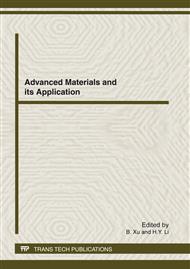p.3
p.7
p.11
p.15
p.19
p.25
p.30
p.35
Electrochemical Study of the Additive-Effect on Sn Electrodeposition in a Methansulfonate Acid Electrolyte
Abstract:
The effect of three organic additives in stannous methanesulfonate baths on cathodic overpotential and Faradaic impedance of tin-electrodeposition were studied by measuring cathodic polarization curves, galvanostatic responses and electrochemical impedance spectroscopy. The results show that the composite additive consisting of three organic compounds can significantly increase the cathodic polarization, crystallization overpotential and charge transfer resistance, which is very beneficial to improve coating quality and result in a fine-grained and smooth matt tin coating.
Info:
Periodical:
Pages:
7-10
Citation:
Online since:
February 2012
Authors:
Keywords:
Price:
Сopyright:
© 2012 Trans Tech Publications Ltd. All Rights Reserved
Share:
Citation:


